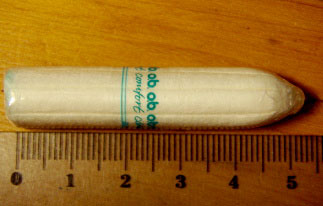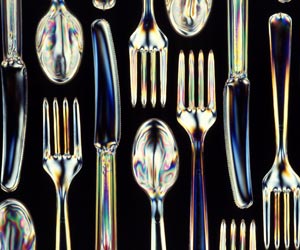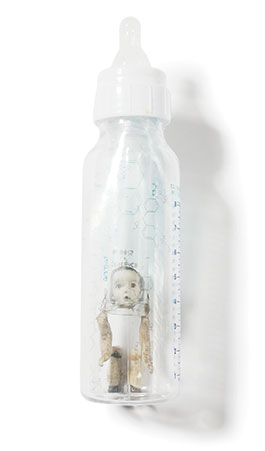
Wikimedia Commons
When my period hits, I usually snag the cheapest disposable product in the feminine hygiene aisle of my nearest Walgreen’s. But then I read on the Sierra Club’s website that the tampons and pads in my bathroom cabinet are not only clogging up US waterways and landfills, but they may also contain materials that could harm my body.
Slate‘s Green Lantern investigated the environmental impact of period supplies and found out that of the 62,415 pounds of total trash one US woman throws out doing her menstrual years, “pads, plugs, and applicators” only account for about 250 to 300 pounds of the garbage. Still, the individual plastic packaging on my pads isn’t exactly helping to decrease my personal landfill load. Same goes for the 16,800 tampons I’m expected to use in my lifetime, though the non-applicator kind are marginally less wasteful: Slate‘s Nina Shen Rastogi points out that applicator-free tampon maker o.b. estimates that its design creates 58 percent less waste than its applicator-included counterparts.
Plastic applicators present some health concerns, too. Back in 2007, MoJo’s Elizabeth Gettelman wrote that “Animal studies have linked phthalates [used in PVC plastics of which some applicators are made] to the same genital abnormalities that are now among the most common birth defects in American baby boys.” There’s no current evidence that applicators will cause these exact same maladies. But the long-term effects of periodically placing plastic near my nether-regions have yet to be investigated, which is a little worrisome.
Then there’s the tampon or pad itself, which, in the US is usually made of non-organic cotton, rayon, or a combination of these materials, along with synthetic fibers like viscose rayon that are added in to increase absorbency. But the non-organic cotton in pads and tampons have soaked up at least some of the more than 55 million pounds of pesticides (PDF) sprayed on cotton fields in the US each year that occasionally make it into our surface water. Diuron, one of the herbicides used on cotton, has even been pegged as a “likely” human carcinogen by the EPA (PDF) and it’s also linked to birth defects. Then there’s the bleaching processes that gives pads and tampons their ivory white appearance. Most manufacturers bleach rayon by using the disinfectant chlorine dioxide in a process that produces trace amounts of a toxin called dioxin, which is known to cause reproductive and developmental impairment at certain levels, though the FDA says that dioxins in contemporary tampons exists at extremely low levels that are hardly detectable. Chlorine-free tampons and pads, however, are out there, made by companies like Seventh Generation, Natracare, and Maxim.
My mom turned me off of tampons in my younger years with stories of women getting toxic-shock syndrome (TSS) from them in the ’80s. In 1980, RelyPR a high absorbency tampon made of polyester foam and cellulose gum caused rashes, vomitting, and high fevers in 812 women. The number of reported TSS cases since then has decreased significantly, according to the FDA. But almost half of all occurrences are still associated with the materials used in hyperabsorbent tampons and from not changing a tampon often enough. As a result, the FDA requires that high absorbency and TSS warning labels appear on all tampons. The synthetic fibers in most designs, however, still increase the chance of toxins forming and leading to toxic shock sydrome.
In the face of all these environmental and health risks from sanitary products, chlorine-free, organic cotton tampons and pads are looking a lot more appealing to me. And I’ve even found them online for my favorite price: pretty cheap. Maybe one day, I’ll even go the way of the DivaCup—or the reusable pad.











